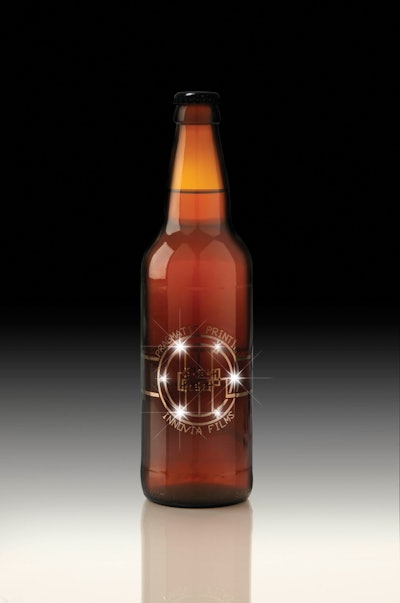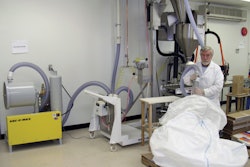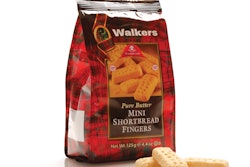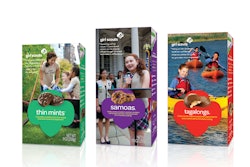Global demand for electronic smart packaging devices, increasingly known as “e-packaging,” will grow rapidly from a mere $0.028 billion this year to $1.7 billion in 2022. Most of this will involve consumer packaged goods (CPG) products. However, even though we are projecting that a lot of CPG companies will be using e-packaging in 2022, the total number of e-packages in the marketplace in 2022 will only represent a small percentage of the total number of packages across the board.
These are not ambitious figures. In 2022, only around 1% of the global expenditure on packaging will involve e-packaging devices. Indeed, e-packaging currently attracts premium pricing most of the time, so it is likely that the e-packaging revolution will add to the global packaging market rather than replace anything. Many electronics markets have grown from next to nothing to more than ten billion dollars in ten years—way ahead of our figures.
To put it another way, when useful electronics is fitted to packaging, it typically justifies 0.01 to 0.03% of product cost, as with 12 billion anti-theft tags currently fitted to products every year at 3 to 5 cents each. Our figures in 2022 are consistent with this rule of thumb.
Why e-packaging?
Reasons for use of e-packaging—which often involves the printing of conductive circuits right on the packaging substrate—include increasing sales by better merchandising, improving the human interface by spoken or scrolling instructions, and providing valuable electronic rewards on or in the package. The Healthcare category includes such things as packets of drug tablets that record which one was removed when so that patient compliance can be monitored. Also in the Healthcare space are drug delivery packs and packs that prompt the user when to take medication. These provide clear instructions by voice, for example, or a scrolling display in large font.
So far, most e-packaging beyond RFID and EAS has taken the form of primary packaging that makes the product more useful and attractive in the eyes of the consumer. This includes applications such as talking pizza boxes, winking logos on multipacks of biscuits and bottles of rum, compliance-monitoring blister packs in drug trials, plastic bottles of drugs that prompt the user, testers on batteries, and reprogrammable decoration on mobile phones. But newer varieties are being explored by big brands.
Vorbeck and MeadWestvaco (MWV) developed a new anti-theft retail package product. This new technology, called Siren™, is part of MWV’s Natralock™ product line. It was launched on store shelves at major retailers including Home Depot in early 2012. This unique design will prevent theft or tampering by setting off an alarm on an individual package if it is cut or torn or upon attempted theft. This adds a level of protection over the standard EAS tags currently in use, which only set off in-store alarm towers if the whole package is removed from the store.
According to MWV’s Michael Londo, MWV developed this new product as a loss-prevention solution for retailers and brand owners. Natralock with Siren Technology eliminates the need for a product to be locked up or hidden. The new packaging solution allows for consumers to interact with the package and see the branding and other messaging that is important for the brand owners to relay while keeping would-be thieves from stealing the product.
Since Siren technology is embedded within the package itself, it allows high-theft products to be displayed as any normal package would be, giving the customer full access to the product and information rather than having to be protected behind locked cases, thereby improving product visibility to influence buying decisions.
Vorbeck’s Vor-ink™ is the enabling technology behind this development. With Vor-ink the fully integrated conductive circuit consists of graphene, which shows excellent conductivity at a competitive price and can also be flexed and wrinkled without damage to the circuit. MWV uses flexographic roll-to-roll printing to process Vorbeck’s graphene-based Flexo-Vor-Ink™ at 60m/min. To complete the circuit the retailers simply attach a thin, reusable electronic module that gives the alarm sound via an integrated speaker if removed from the package or other damage to the circuit.
At the annual IDTechEx Printed Electronics USA 2011 event MWV and Vorbeck Materials won the Best Product Development Award. One judge commented, “This is the winner for several reasons. One, it is a very significant market segment. Two, it is one of the closest things to true ’printed electronics.’ I like the fact that it is a printed graphene ink. MeadWestvaco, partnering with Vorbeck Materials, has developed a breakthrough technology that will affect the retail chain in a significant way. Loss prevention is a huge drain on retailers and this solution directly addresses a significant need.”
Interactive bottle labels
Innovia Films and PragmatIC Printing have successfully integrated printed electronic functionality onto Innovia Films’ Biaxially Oriented Polypropylene (BOPP) label substrates. The first prototypes are interactive bottle labels that activate a sequence of flashing lights when the bottle is held.
Scott White, Chief Executive Officer of PragmatIC Printing, commented: “Our collaboration with Innovia Films has demonstrated that our unique imprinted electronics can be integrated successfully onto label and packaging films. We now aim to progress these concepts together towards volume production and commercial deployment.”
Steve Langstaff, OPP Product Manager at Innovia Films, adds this: “This is a highly significant step for BOPP. Innovia Films is well known within the packaging and labels arena as a proactive developer of specialist surfaces on BOPP films. This exciting development is only a small part of a larger project getting printable electronics into volume packaging markets.”
PragmatIC Printing enables printed logic circuits that introduce intelligence and interactivity into a wide range of products and applications, in form factors that are not possible using silicon chips. In 2010, PragmatIC acquired the printed electronics business of Nano ePrint Ltd, including its patented technology for planar nano-electronic devices that can uniquely be fabricated in a single layer of semiconductor via single-step imprint patterning. PragmatIC has extended this proven imprinting process to allow a full range of device and circuit architectures to be printed in transparent, flexible semiconductors at micron and sub-micron scale.
Earlier in 2011 PragmatIC Printing completed a prototype printed electronic greeting card for Hallmark subsidiary Tigerprint Ltd. The prototypes demonstrate the viability of transistor logic circuits on flexible substrates, integrated into conventional greeting cards alongside other printed electronics technologies (such as conductive inks and thin film batteries), to create a dynamic flashing animation. This is achieved without materially increasing the thickness of the card, and without the complicated assembly required for greeting cards employing conventional electronics.
Potentially powerful partners
Earlier this summer Thin Film Electronics ASA and Bemis Company announced an agreement to develop a flexible sensing platform specifically for the packaging market. The result will be a new category of packaging that can collect and wirelessly communicate sensor information for use by leading food, consumer products, and healthcare companies worldwide.
Thin Film has previously announced technology partnerships to develop an inexpensive, integrated time-temperature sensor for use in monitoring perishable goods and pharmaceuticals. Under the agreement with Bemis, Thin Film will extend this work to create a customizable sensor platform that Bemis will subsequently tailor to its customers’ individual requirements. The Intelligent Packaging Platform can be adapted to monitor and record key physical properties and environmental data in packaged perishable products.
“Intelligent packaging is an emerging technology with many potential intersections with Bemis’ flexible packaging and pressure sensitive materials business segments,” says Henry Theisen, Bemis Company President and Chief Executive Officer. “Our agreement with Thin Film represents an investment in a technology that could eventually make printed electronics a component of every package we manufacture.”
Bemis’ packaging is used for a wide range of products from meat and cheese to medical devices and personal care items. Its customers include leading food and consumer products companies around the world.
“These are exciting times for the printed electronics market, where innovative solutions that simply could not be manufactured before are soon to be delivered,” says Davor Sutija, CEO, Thin Film. “Our partnership with Bemis will lead to new categories and types of packaging that will bring intelligence to the everyday lives of millions of people worldwide. We are excited to work with the company because of their distinguished history of innovation and their vision for printed electronics.”
What the future holds
In the future, many forms of electronic smart packaging will involve complex functions. Examples may be packages that project images or vibrate to dispense powders in a quantity programmed by the user and packages that suck down reusable electronic shrink wrap to preserve food. Arla Foods, the largest European dairy products company, has been looking at some of these possibilities. RFID sometimes provides brand enhancement recognisable to the consumer, and this will happen in new ways in future such as the self adjusting use-by date that monitors the time temperature profile of produce.
Currently the supply chain for e-packaging and its key enabling technology, printed electronics, is typical of new technologies. There is too little user pull. Also, applications of electronics to packaging have been engineering-led in the main and lacking in imagination—a better recorder or talking label, for example, as opposed to a radically new concept. But this is changing. Indeed, IDTechEx has many new clients in 2011 that are in consumer goods, electrical goods, and other sectors that eagerly seek to adopt printed electronic products and capabilities.
We are confident that e-packaging will become a major new activity that will rise to many billions of dollars in value. The leaders making these new devices or their materials will have established exactly what is wanted and what is possible. Based on this detailed knowledge and inspired creative design, the leaders will each create a one billion dollar activity within 10 to 15 years. Across the whole of industry, from toys to medical products, users and legislators require more and more information on products and packaging, and they require it to be much easier to assimilate. One third of people have difficulty reading instructions, and the greying of the population is making matters worse. There is an unfulfilled need for easily accessed, easily understood instructions, and comprehensive information on hundreds of billions of products made every year. There is also an increasing need for error reduction such as a timer on the hair dye packet. Medicines need to remind the patient when to take them, and perishables need to monitor if they have been overheated. Brands need to be much more distinctive and appealing, for example revealing a moving colour picture, aroma, or localised sound when you walk near.
Printed electronics and e-packaging won’t answer all of these needs, but they will be a solution for many.
Cathleen Thiele is a technology analyst at IDTechEx, a leading consultancy and authority in printed electronics that also organizes events in the printed electronics space. Printed Electronics and Photovoltaics USA 2012 will be held December 5-6 in Santa Clara, CA. For more information, visit www.PrintedElectronicsUSA.com.



























